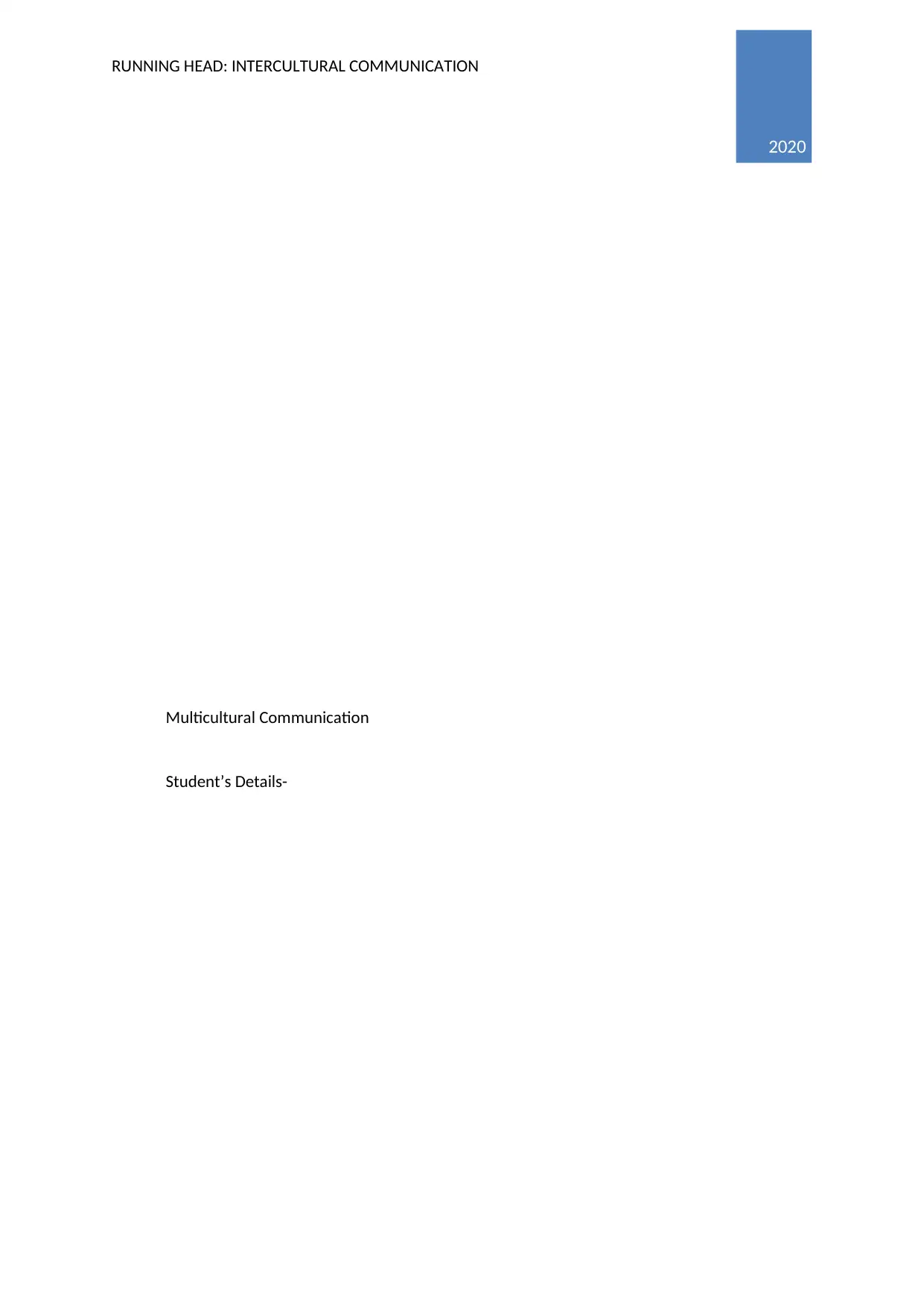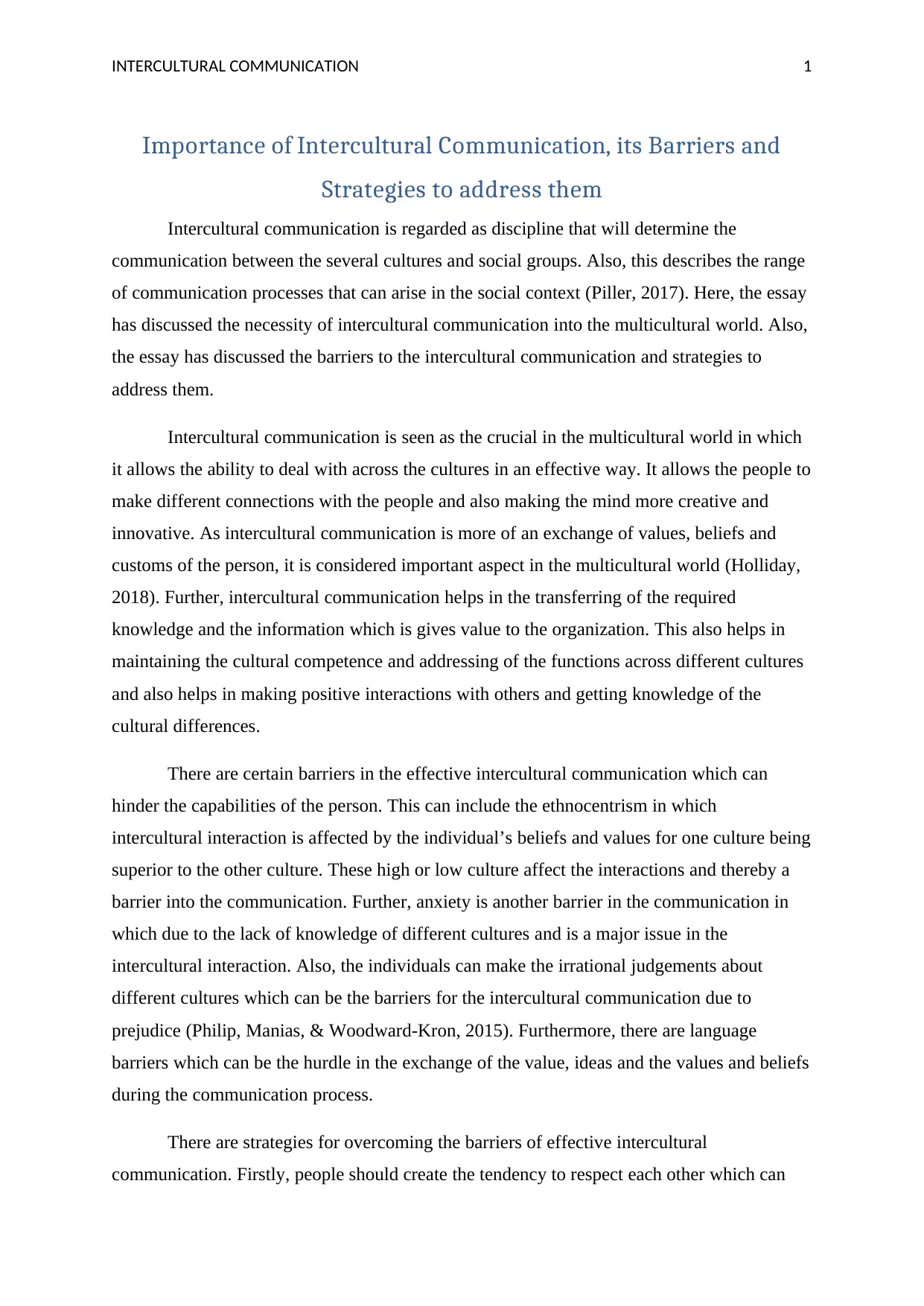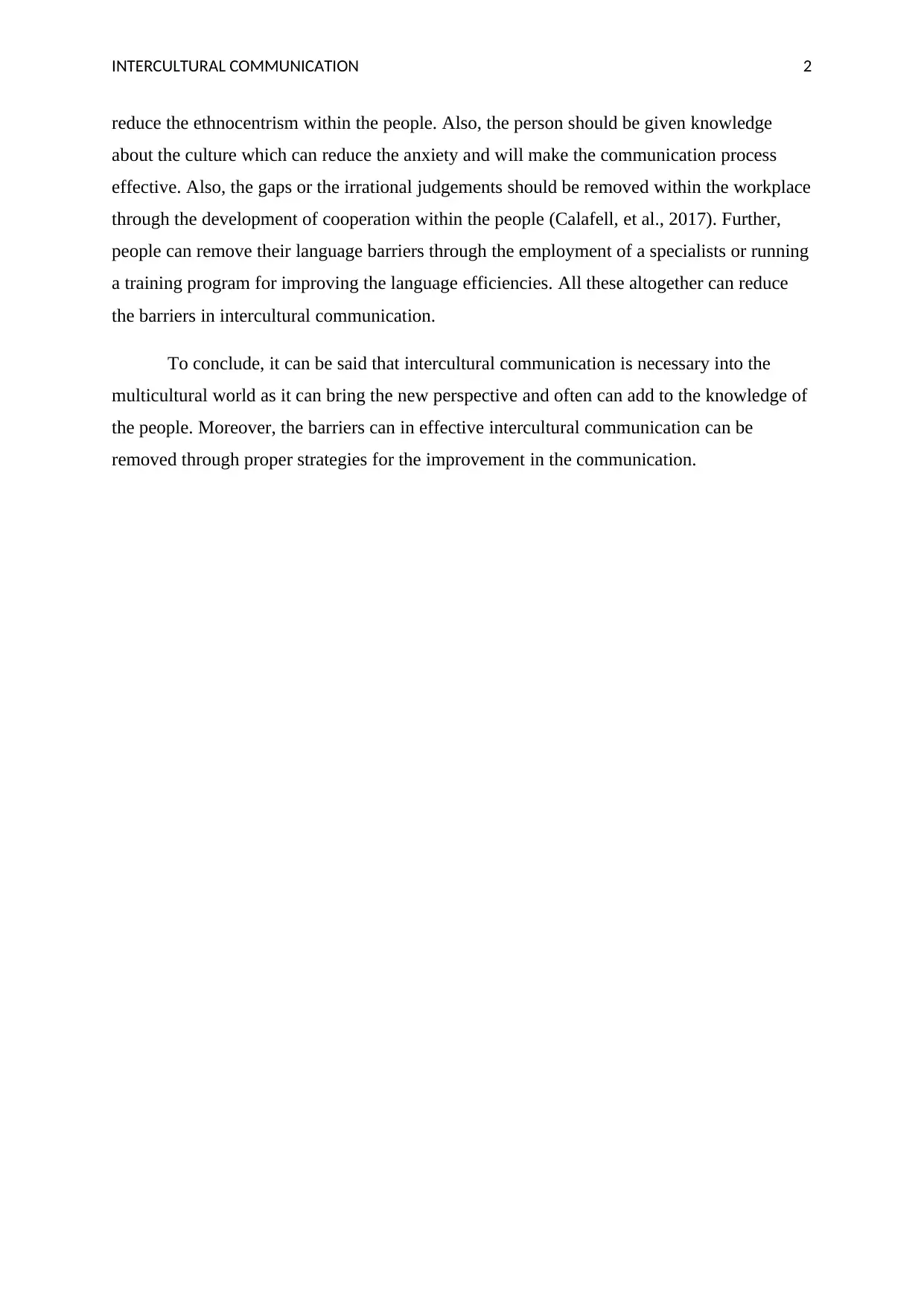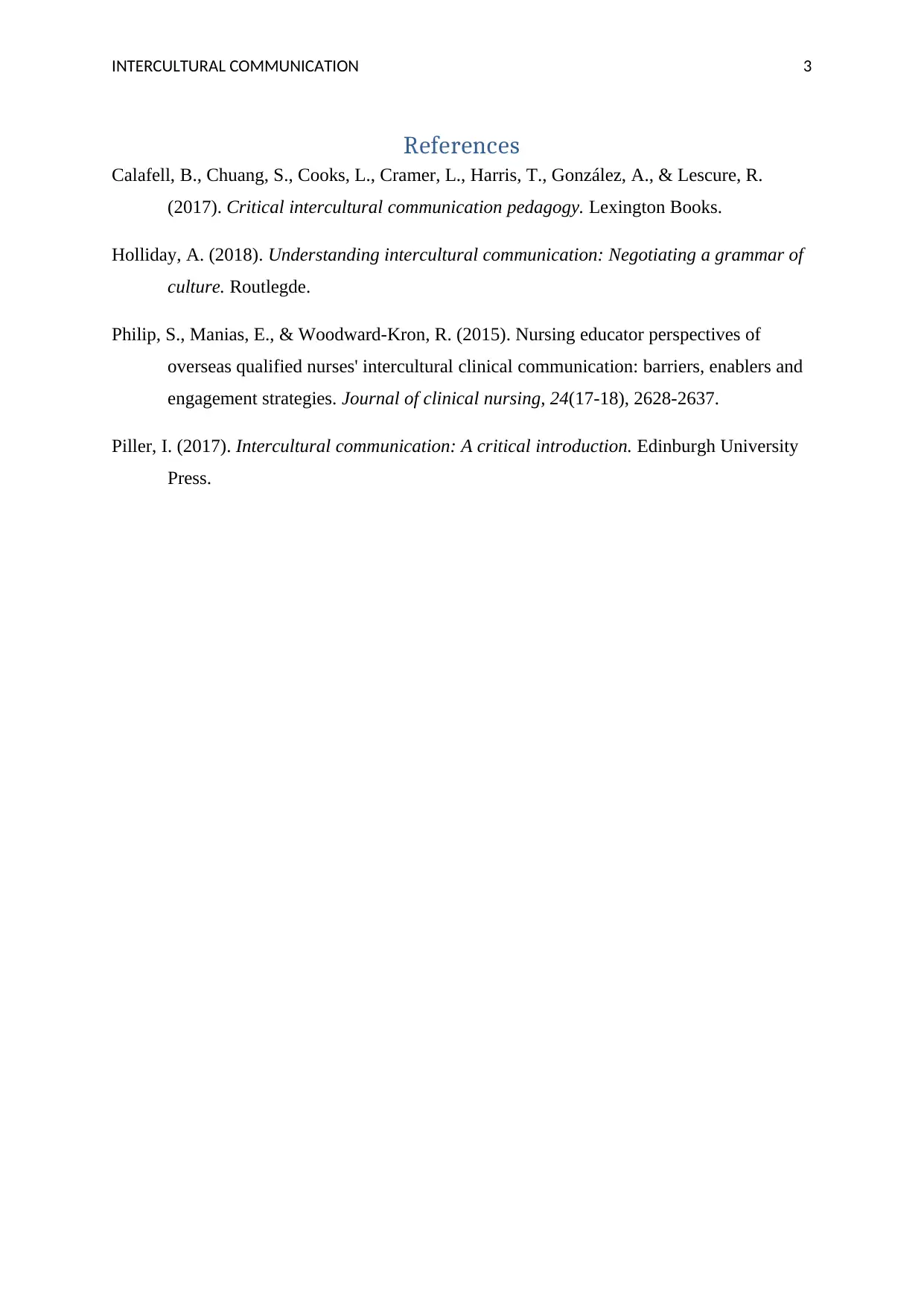Intercultural Communication: Addressing Barriers and Strategies Essay
VerifiedAdded on 2022/08/12
|4
|711
|28
Essay
AI Summary
This essay delves into the critical importance of intercultural communication in today's multicultural world. It highlights how effective intercultural communication facilitates connections, fosters creativity, and enables the exchange of values, beliefs, and customs. The essay identifies several barriers to effective intercultural communication, including ethnocentrism, anxiety, prejudice, and language barriers. It then outlines strategies to overcome these barriers, such as promoting respect, providing cultural knowledge, addressing irrational judgments, and employing language specialists or training programs. The essay concludes by emphasizing the necessity of intercultural communication in a diverse world and the importance of implementing strategies to improve communication and understanding. The essay references several academic sources to support its arguments.
1 out of 4











![[object Object]](/_next/static/media/star-bottom.7253800d.svg)